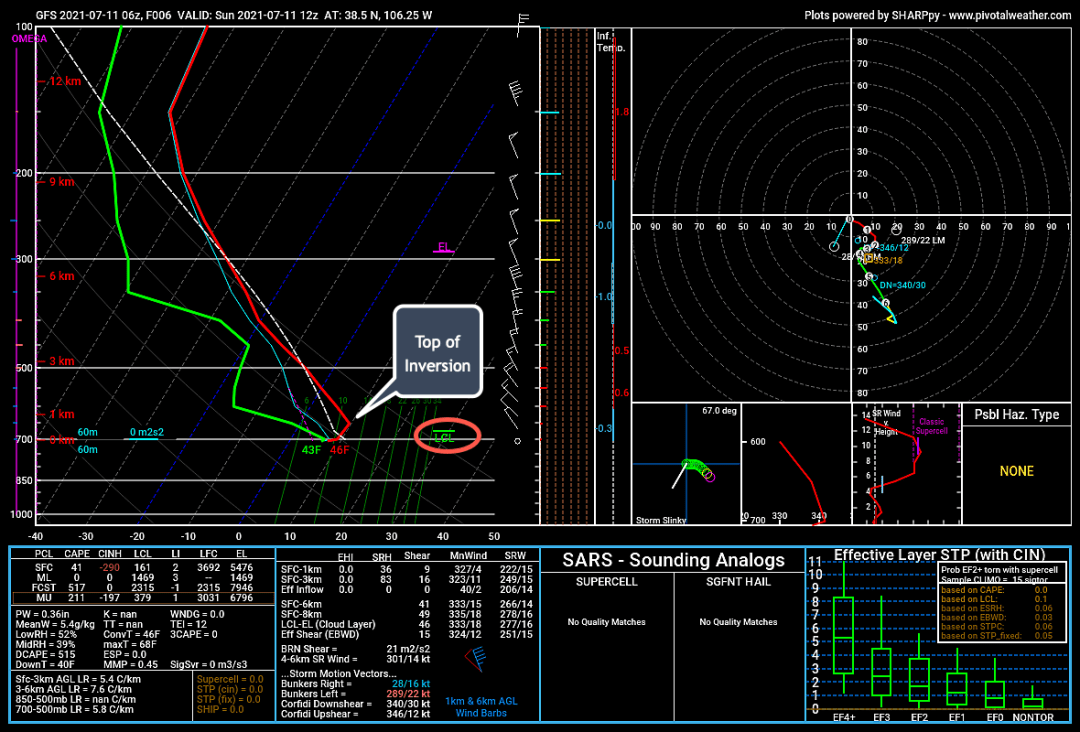Convection and inversions
One frequently affects the other.

Most of us are somewhat familiar with convection and inversions, but may not realize the two are frequently connected and very often influence each other. Let’s take a look at them separately and together.
Convection
Convection occurs when a heat source is applied beneath a parcel of air, causing it to rise. To envision this, imagine a quantity of water in a clear glass container being heated on a stove. As the water is heated from beneath, bubbles of hot water begin to rise from the bottom of the container, where it’s closest to the heat source, to the top of the container. Think of this parcel of water as representative of a parcel of air. As the water rises to the top of the container, cooler water at the top sinks to the bottom to be heated and keep the cycle going. When the parcels of water are hot enough and many of them are rising at once, you get the familiar boiling water.
When air parcels are in play, the heat source is usually the sun, which warms the earth beneath the atmosphere. The heating of the earth’s surface is uneven. Bare, dark soil will heat more than green grass or a snow-covered surface. This heat is then transferred to the air immediately above the surface, which becomes warmer than the surrounding air and begins to rise. If the heating is strong enough, convective lifting will carry the air upward. Lifting can also be provided when air is forced upward because of mountains or other rising terrain (orographic lifting) or when the forcing is provided by a cooler airmass moving beneath warmer air.
At some point, defined as the Lifting Condensation Level (LCL), the parcel cools to its dew point and water vapor begins to condense into clouds. Once the air reaches the Level of Free Convection (LFC) it will continue to rise until it cools to the temperature of the surrounding atmosphere. At that point, the parcel becomes stable and ceases rising. This is the parcel’s Equilibrium Level (EL) and generally coincides with cloud tops.
The difference between the LCL and the LFC becomes more important as the two get closer together. The smaller the diffence between the two, the greater the chance for deep convection and thunderstorm formation. Small differences between LCL and LFC are associated with the formation of F2 to F5 tornados, as are LCL heights from 500m (1600 ft.) to 800m (2600 ft.) above ground level.
Inversion
Normally, the atmosphere’s temperature decreases with altitude, but frequently the air closest to the earth’s surface is cooler than the atmosphere above it. In other words, the temperature increases with altitude, at least for some distance. This is caused by clear skies at night that allow the earth’s heat to radiate into space, cooling the air next to the surface at a faster rate than that of air aloft. Generally, factors affecting inversions are clear skies, calm wind, close to sunrise or sunset, dew is present, smoke exhibits a horizontal movement pattern, and ground fog may be present in low-lying areas.
Temperatures that increase with altitude cause the atmosphere to be very stable. An air parcel rising into an inversion will be cooler than the surrounding environment, which inhibits its ability to ascend. Often, this means that dust and pollutants are trapped beneath the inversion because the stable air prevents air parcels from rising with convection to where the pollutants can be dispersed by upper level winds. Air masses that lie in the lee of mountains, as frequently occurs on the Front Range of the Rocky Mountains, can produce very strong inversions. Denver’s infamous ‘brown cloud’ is a well known example.
The model sounding below from the area near Colorado Springs, CO, shows a fairly well-defined inversion. The red line indicating atmospheric temperature moves to the right from the surface to around one kilometer (3,300 feet AGL), before resuming the normal temperature profile. This sounding represents an early morning time frame, so the inversion would likely wash out with some surface heating and mixing from surface winds as the morning wears on. At the time of the sounding, the atmosphere near the surface at this location is very stable.

Since an inversion tends to dampen or prevent convection, the stronger and deeper the inversion the more stable the air and the more energy is needed for an air parcel to break through the inversion and reach the Level of Free Convection, after which the parcel will continue to rise.
The area between the ground and the LFC is where the air parcel is negatively buoyant. The term for this dampening is Convective Inhibition, or CIN, which is a measure of the energy needed for a parcel to reach the LFC. If an inversion is present, CIN will generally correspond with the top of the inversion. Another term for this effect is a cap or capping.
So, how do inversions and convection work together?
Most thunderstorm activity is an afternoon phenomenon because, as a rule, the air is fairly or very stable during the early morning hours. As the sun heats the earth’s surface, any inversion present will frequently ‘wash out’ when mixing by rising air normalizes the temperature profile as the morning heat increases. As the inversion disappears and the atmosphere resumes the more normal decreasing temperature with altitude, it takes less energy for lifting to occur and for the air parcel to reach the LFC where it can continue to rise to form clouds.
If the inversion is particularly strong, capping may persist for long periods, inhibiting convection and preventing thunderstorm formation or limiting the strength of storms that do form. Examining Skew-t sounding charts for your area can reveal the presence of an inversion and the amount of convective lifting that may be available. The presence of haze, smoke, or dust in the atmosphere near the earth’s surface can also provide visible evidence of the presence of an inversion.
